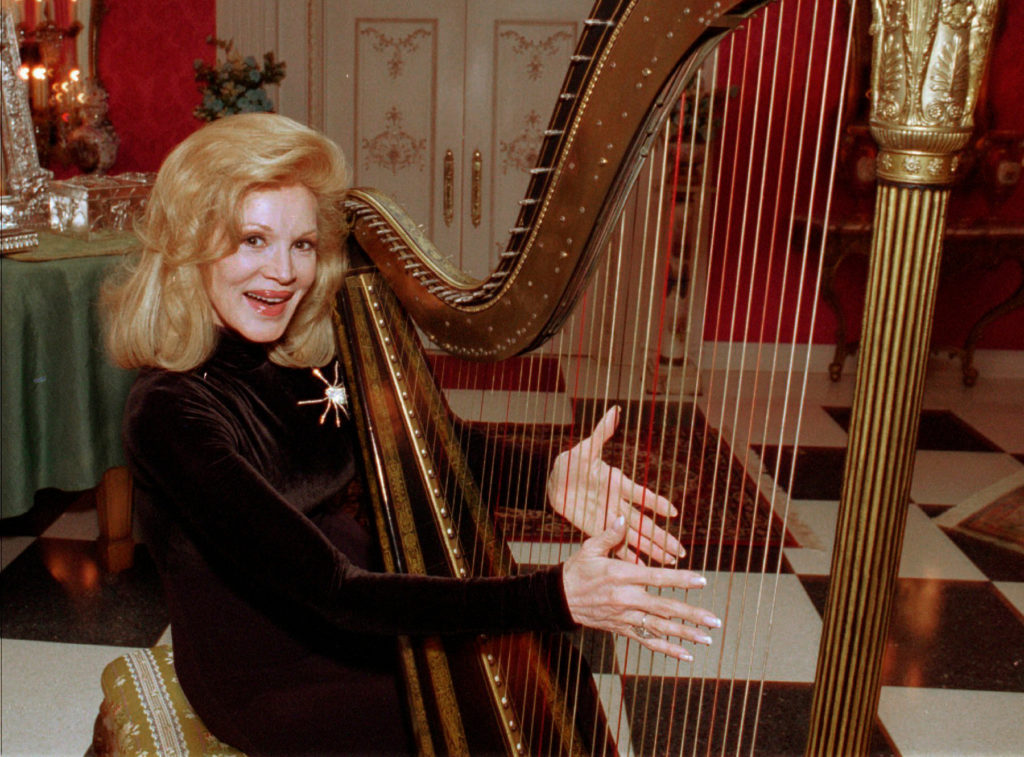Phyllis McGuire, the lead singer of the McGuire Sisters, once said of her jewelry collection “I wear the jewels, they don’t wear me.”
A woman of refined taste and bold style, Phyllis was well-known in social circles for her fabulous collection of fine jewelry. She boasted in a 1989 Vanity Fair interview that she was one of Harry Winston’s best customers, claiming to have spent millions of dollars worth of jewelry. In her words, the famed jeweler is alleged to have said to Phyllis, “If there ever was a lady meant to wear jewels, it’s you.” With her recent passing in December of 2020, Phyllis’s beloved jewelry collection has come to light and this brief article seeks to highlight some of her most noteworthy pieces.
AUCTION PREVIEW: Browse the Jewelry of Phyllis McGuire in the 2021 September 27 Fall Fine Jewelry Signature Auction #5521
History’s fascination with Phyllis’s personal life and her varied relationships with powerful men feature prominently in articles and interviews, leaving a media footprint that solidifies her legacy in ways that can be misleading. For instance, when considering Phyllis’s jewelry collection people are quick to assume that many items were gifts from her male admirers. But in fact, Phyllis poured her profits into a carefully curated collection of jewelry. A deeper look into her life reveals a woman who was incredibly socially well-connected, had a keen business sense and positioned herself well in financial investments. Make no mistake, many of the best jewelry items Phyllis likely purchased by herself, for herself.
Phyllis seemed to prefer rubies, sapphires, and emeralds. She carefully chose her jewelry according to color and gemstone in her 1989 Vanity Fair photo spread. Sitting at the harp in her opulent living room and with an outstretched hand she displays a collection of emerald and diamond jewels. One of which is the stunning emerald-cut Colombian emerald ring weighing 25.11 carats is unusually offset, sitting diagonally on the shank.
In the same photo, layered on her wrist are two bracelets, one featuring emeralds and diamonds arranged like flowers. Heritage Auctions sold this piece for 18,125 in August 2021.
The other is a fantastic fifties-era piece, volumetric in its design. Rows of baguettes create rolling scrolls that wrap and fold.
Two iconic bracelets from New York jeweler, Seaman Schepps, feature in Phyllis’s collection. Both make unconventional use of multi-color gemstones in a manner akin to an assemblage or a collage. Schepps had no formal training in jewelry making. Instead, he developed a method of arranging stones for their dramatic chromatic impact. Such is the nature of the 1940s Rio bracelet, which combines large, gently tumbled tourmaline, emerald, and aquamarine with bands of mixed sapphires, rubies, emeralds, and diamonds.
Yet even more iconic is the fan-shaped cuff of a variety of blue-hued stones including aquamarine, topaz, zircon, and one tourmaline. Clearly, it was all about color, and one can see Schepps’ resourceful ingenuity. In 2004 the Museum of Art and Design in New York launched an exhibition of the famed jewelry house titled “Seaman Schepps: A Century of New York Jewelry Design” and had the two bracelets pictured in the accompanying catalog.
Extravagant diamond jewelry makes frequent appearances in Phyllis’s collection, some of which came from Oscar Heyman Bros., Russian platinumsmiths who immigrated to the United States and brought the old-world manufacturing of high-style pieces to America in 1912 when they established their firm. They manufactured fine pieces for major American jewelry houses and also retailed their own items. A glamorous diamond bracelet of 22.37 carats set in platinum drapes effortlessly across the wrist. Its links move with great fluidity.
A Burma ruby and diamond bow brooch from the 1950s is constructed in such a way that the baguette-cut gems are set perfectly against one another, creating graceful curves much like a ribbon.
A versatile double clip brooch of diamonds from the 1950s provides versatility, worn separately or together with the addition of a metal mount that secures the two together seamlessly.
Perhaps the most extravagant diamond adornment in her collection is a white gold choker of approximately 36 carats, (sold by Heritage Auctions for $47,500) which was a favorite item in her later years as she is often pictured wearing it to social events. An unusual piece of North Indian manufacture is called an Aad, or Arya in other dialects. The adornment consists of a large curved panel that hugs the neck from which is suspended a complex chain-mail network of interlocking links that cascades down the collar. A traditional Aad would be made of yellow gold and traditional kundan-set polki diamonds with rubies and emeralds, yet Phyllis’s piece is unique in that it adopts the all-white, all-diamond look popular in the early 1900s when British colonial influence in India was at its height. Phyllis’s necklace can be described as an Art Deco Indo-Western version of the Aad.
Without fail, Phyllis always wore her Indian choker in unison with a pair of diamond and platinum earrings from the 1950s. The two dangling pear drops move in a way that compliments the articulation of the choker’s cascading components.
On a particular occasion of a perfume launch in 1999, she is also seen wearing the 1950s diamond and platinum bracelet. It is composed of varied cuts that center two triangular diamonds enveloped in curving scrolls. Phyllis intermixed jewelry of varying periods and cultures, making a harmonious suite of diamond jewels.
Photos of Phyllis McGuire reveal a woman that was bold, just like her jewels. They were the perfect accompaniment to her grand persona. All of these pieces with the exception of the diamond collar, which was sold by Heritage on August 10th, are featured in Heritage Auctions’ upcoming Fine Jewelry Signature Auction on September 27th.
